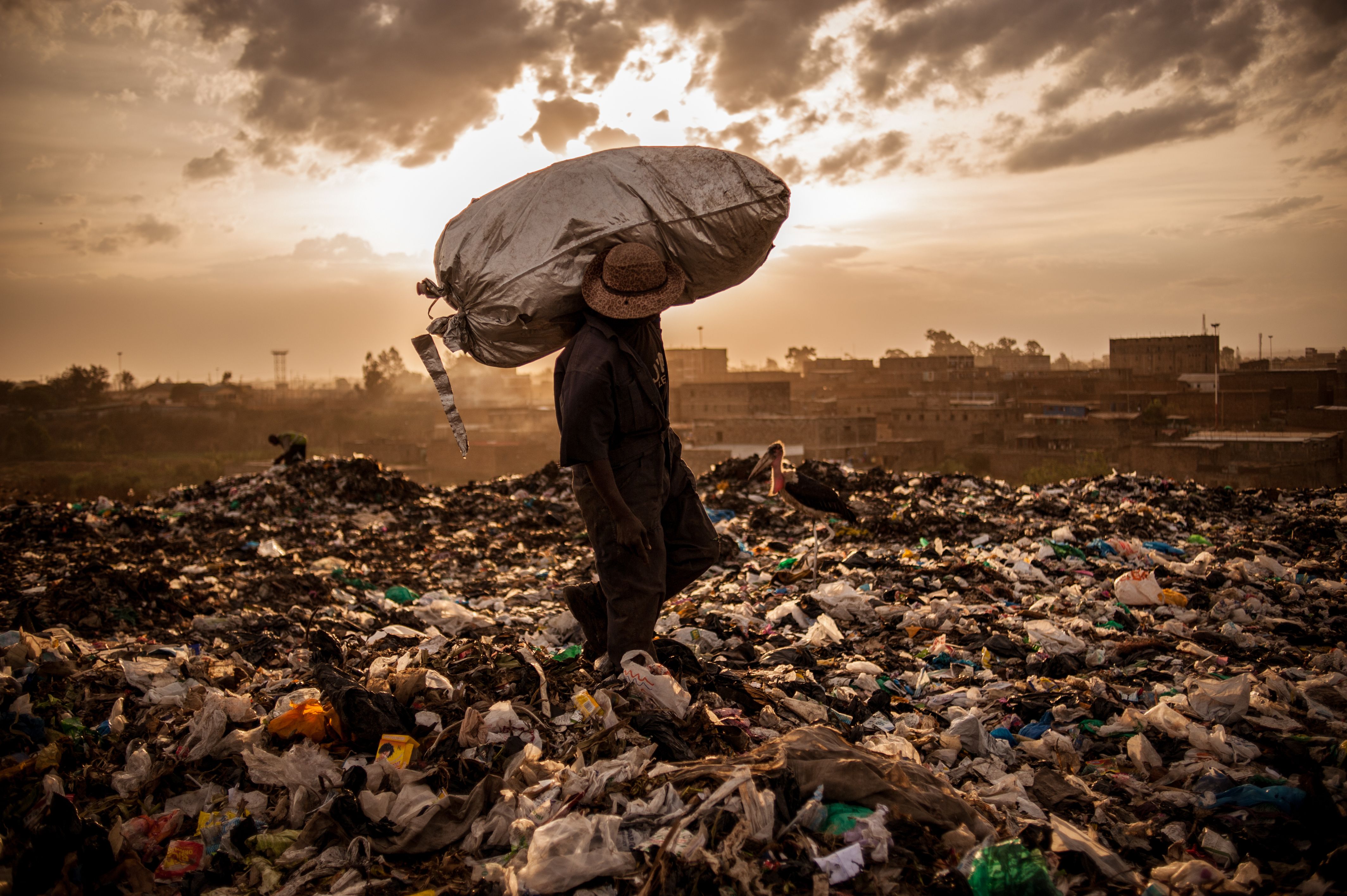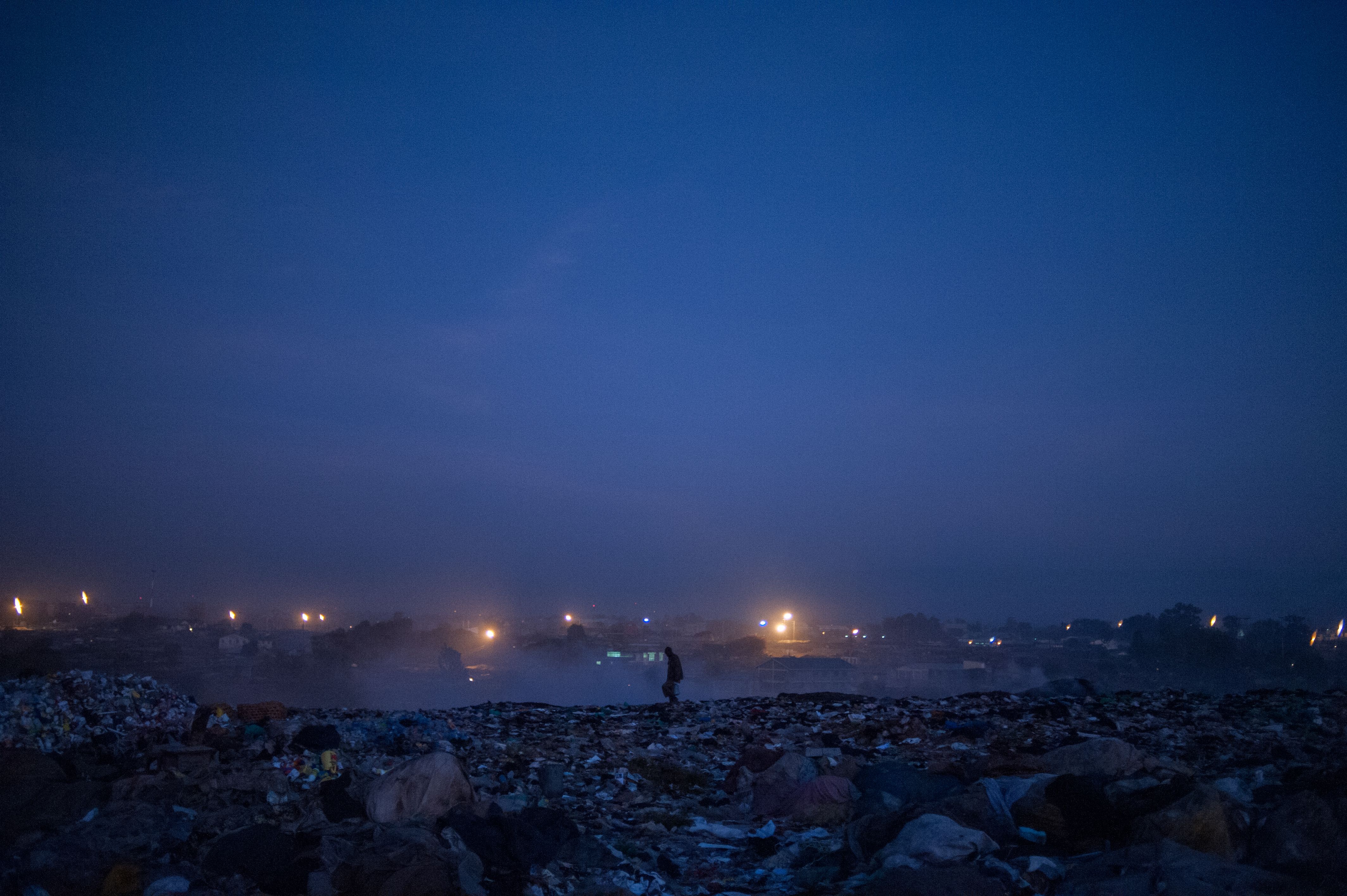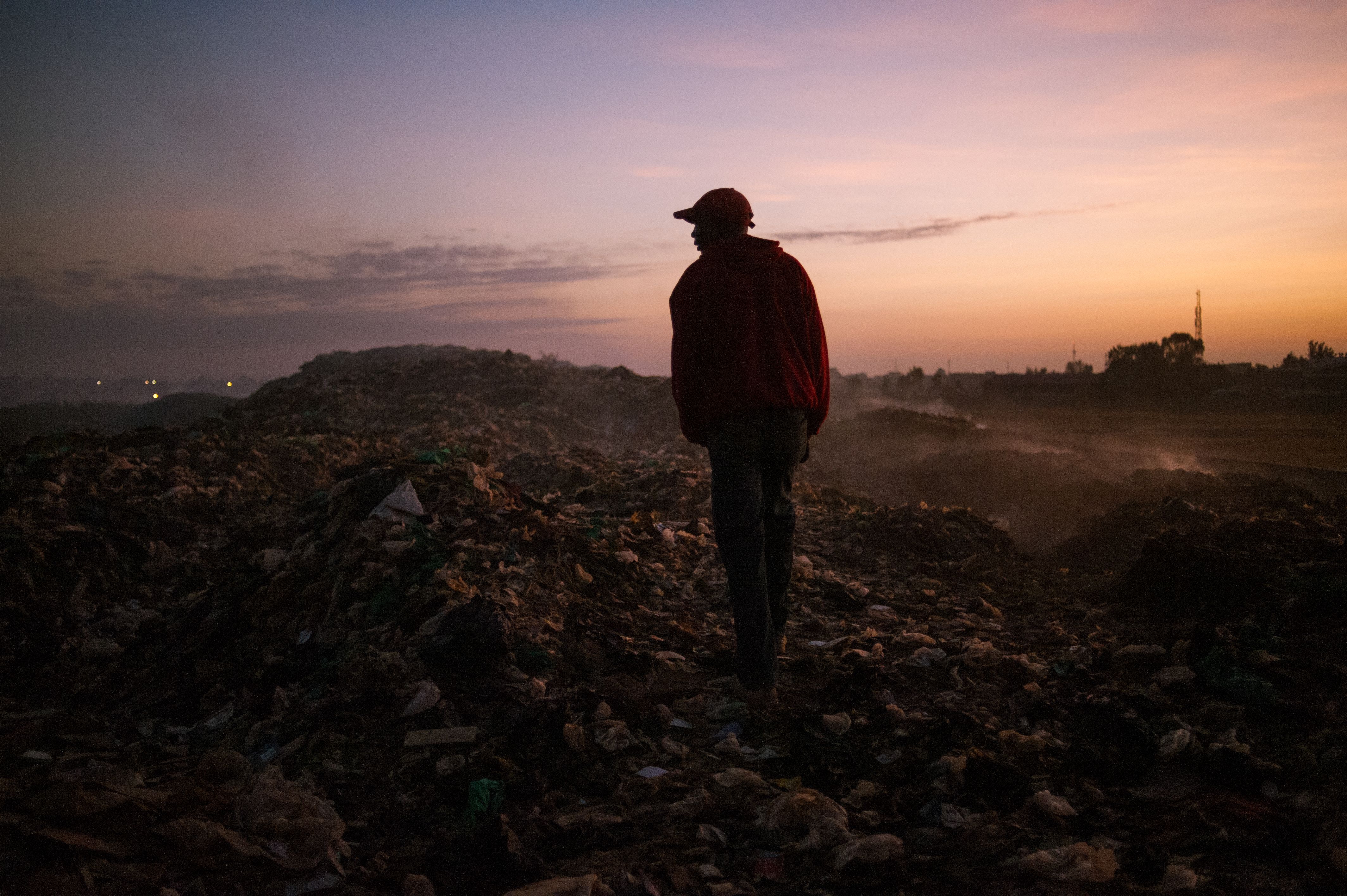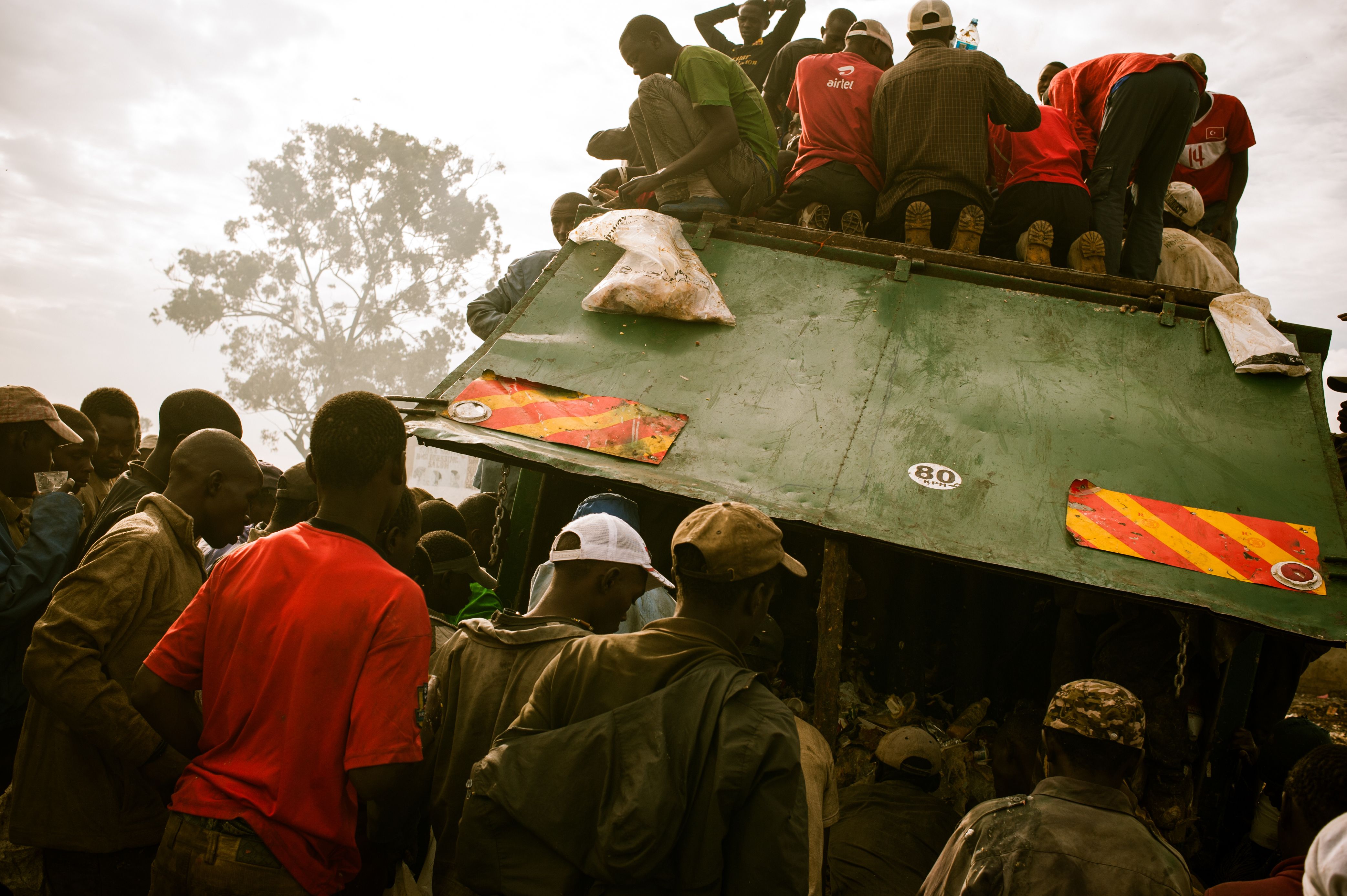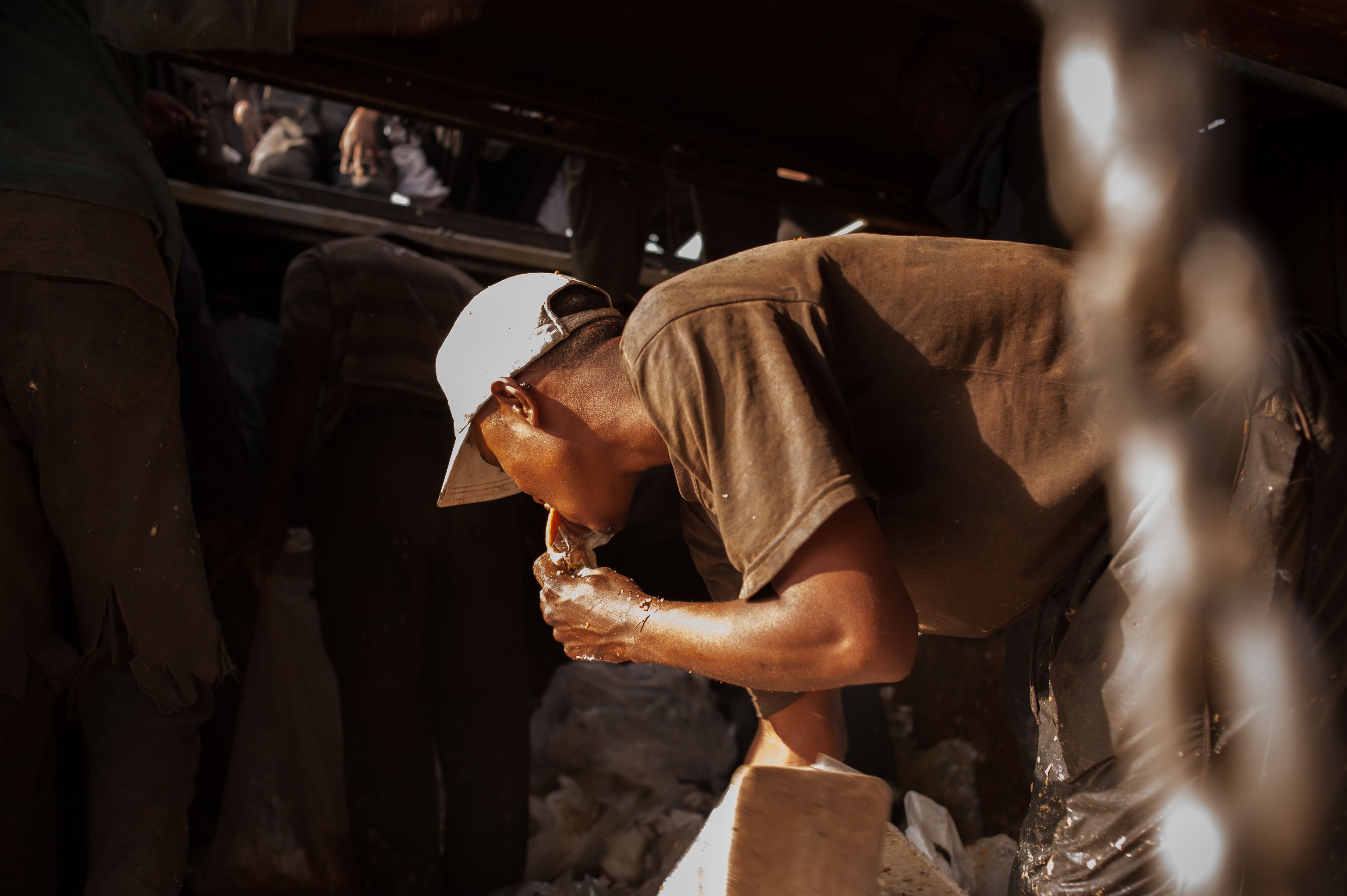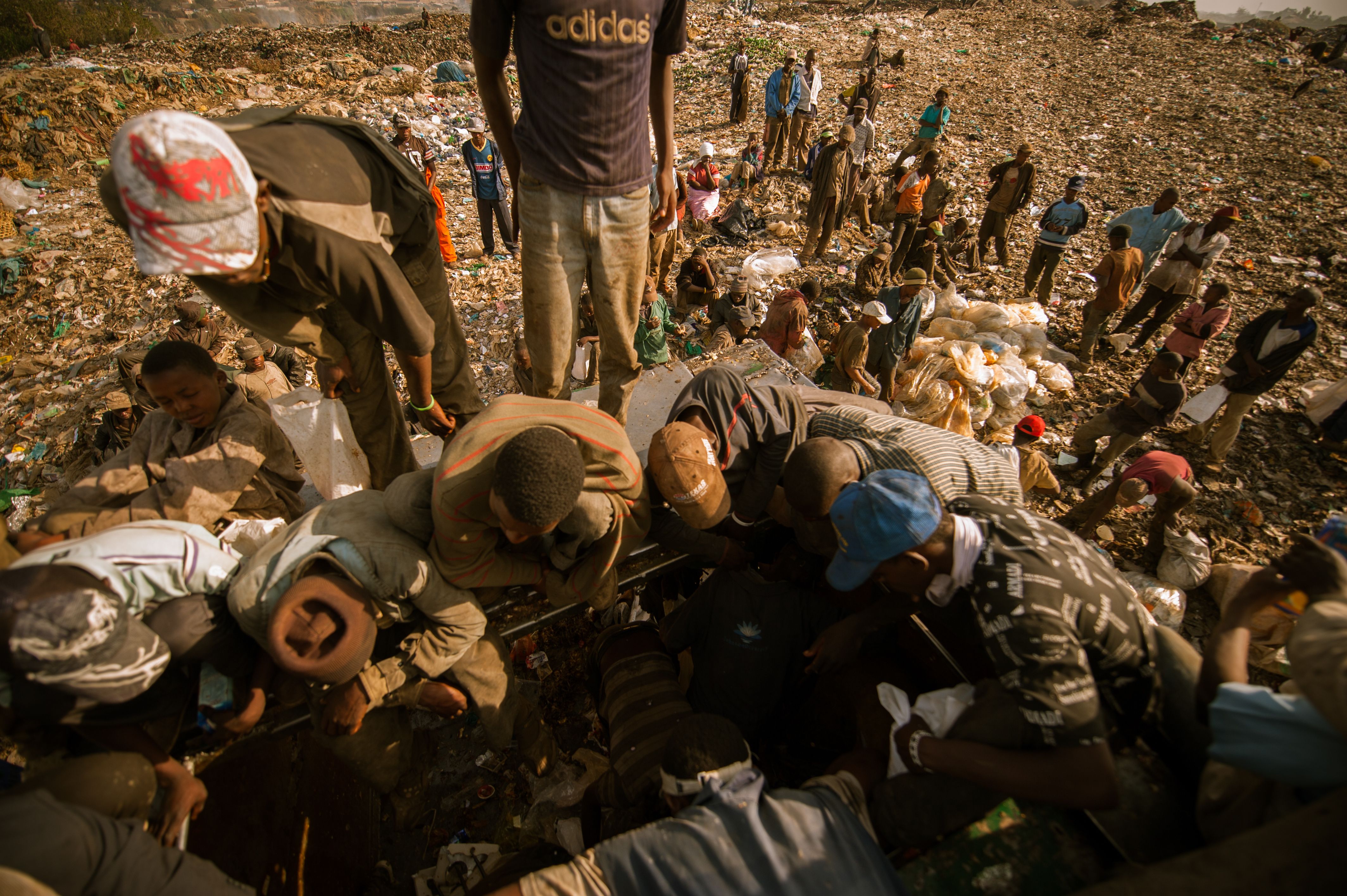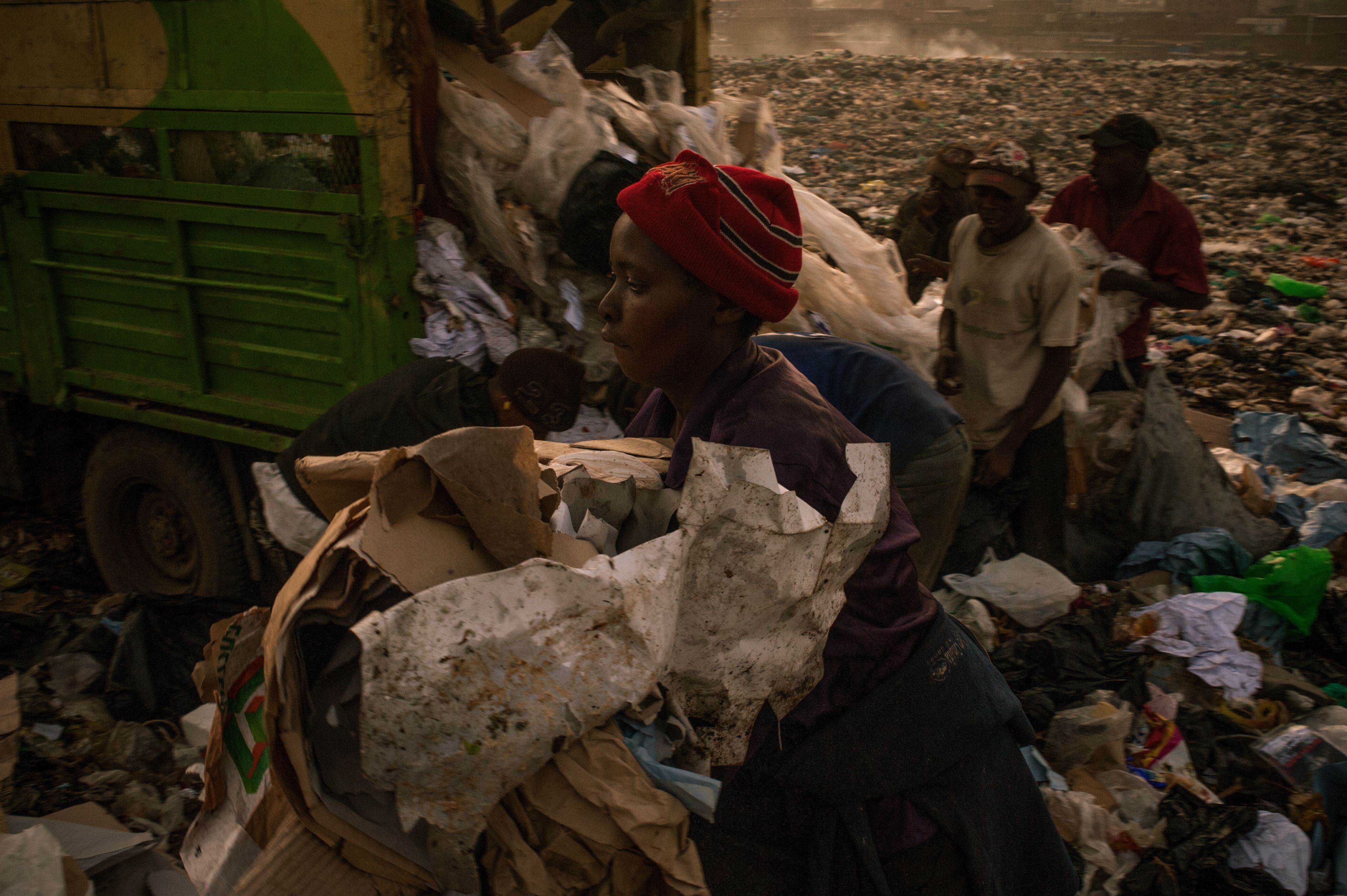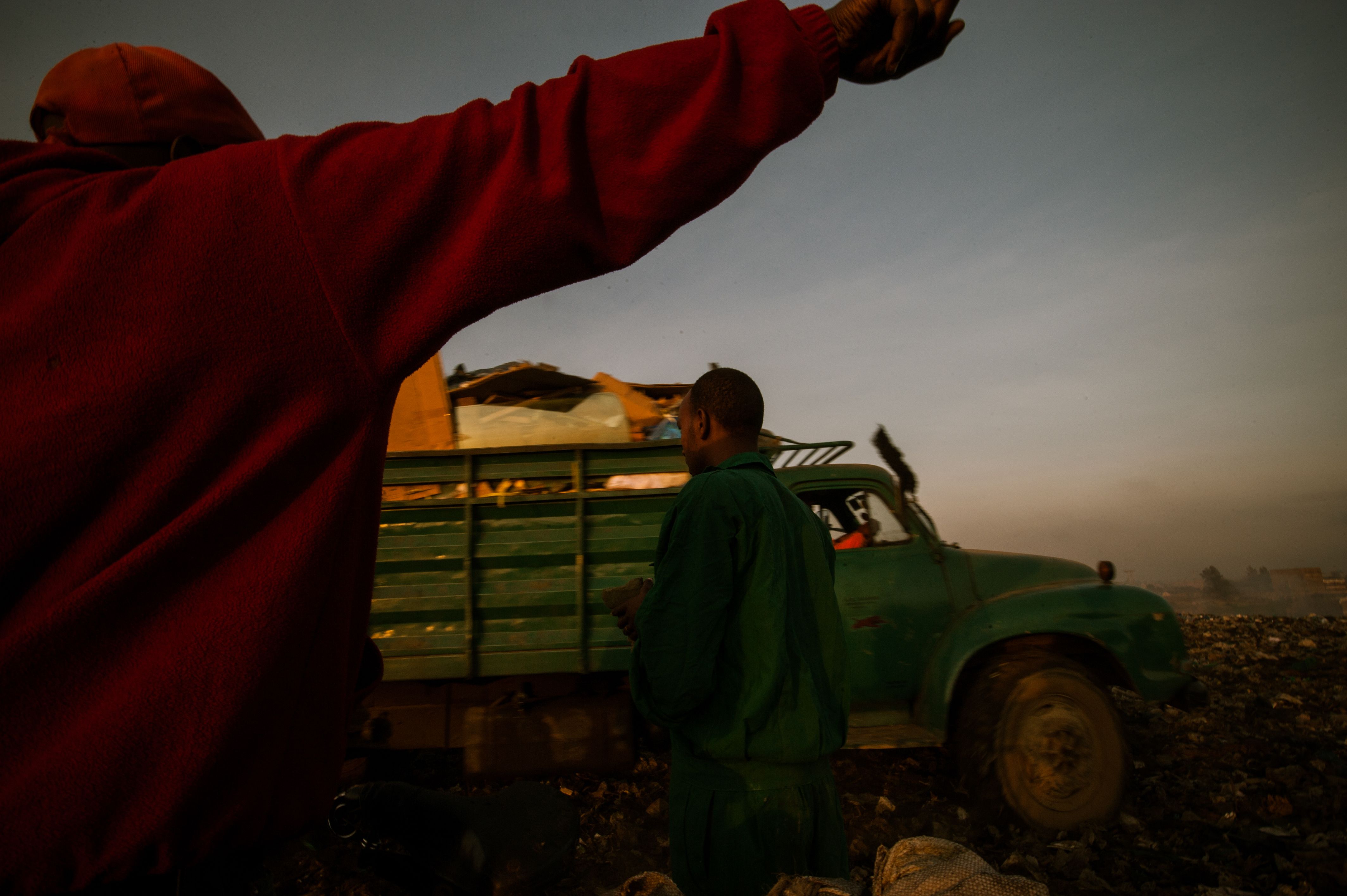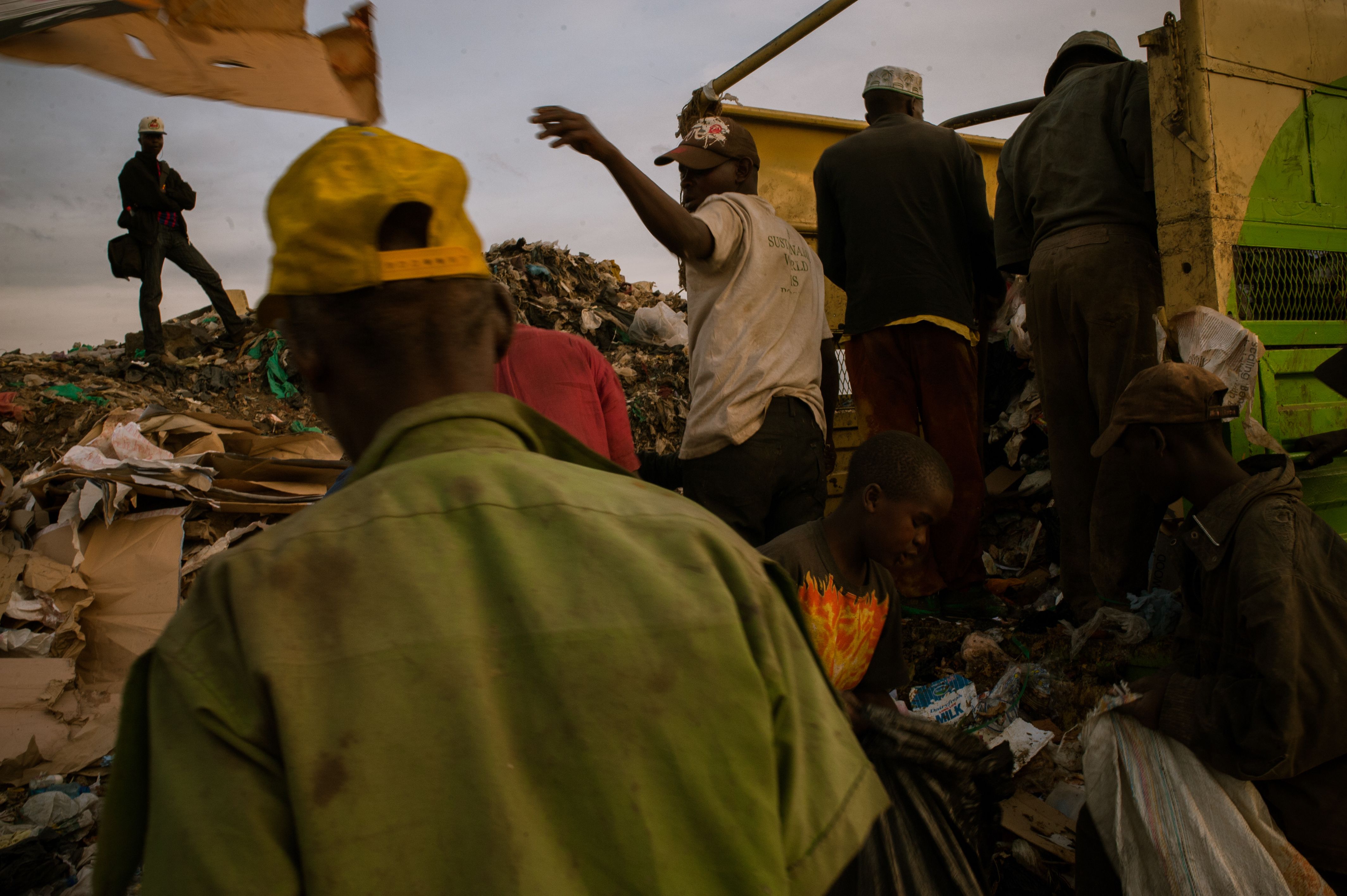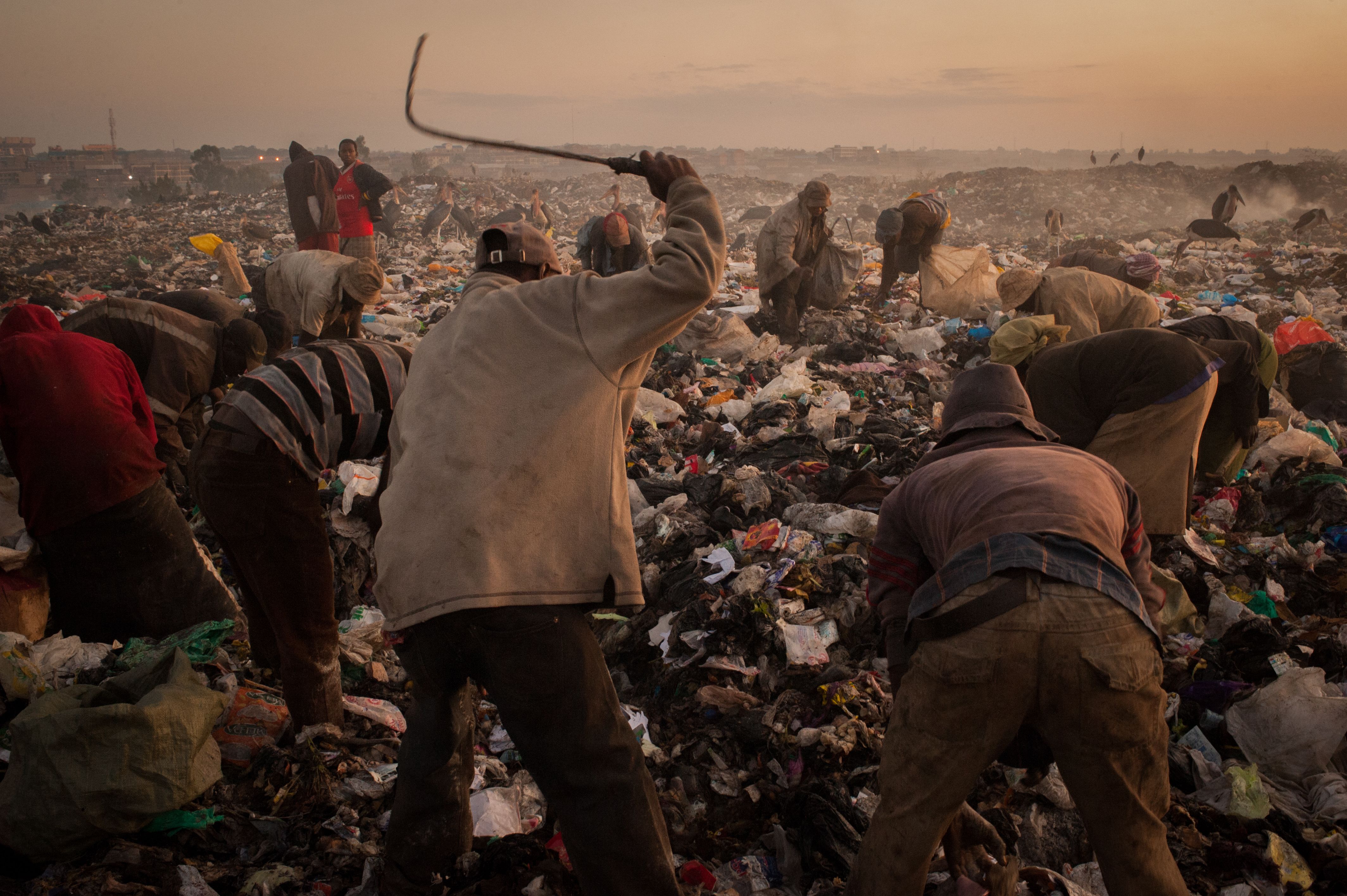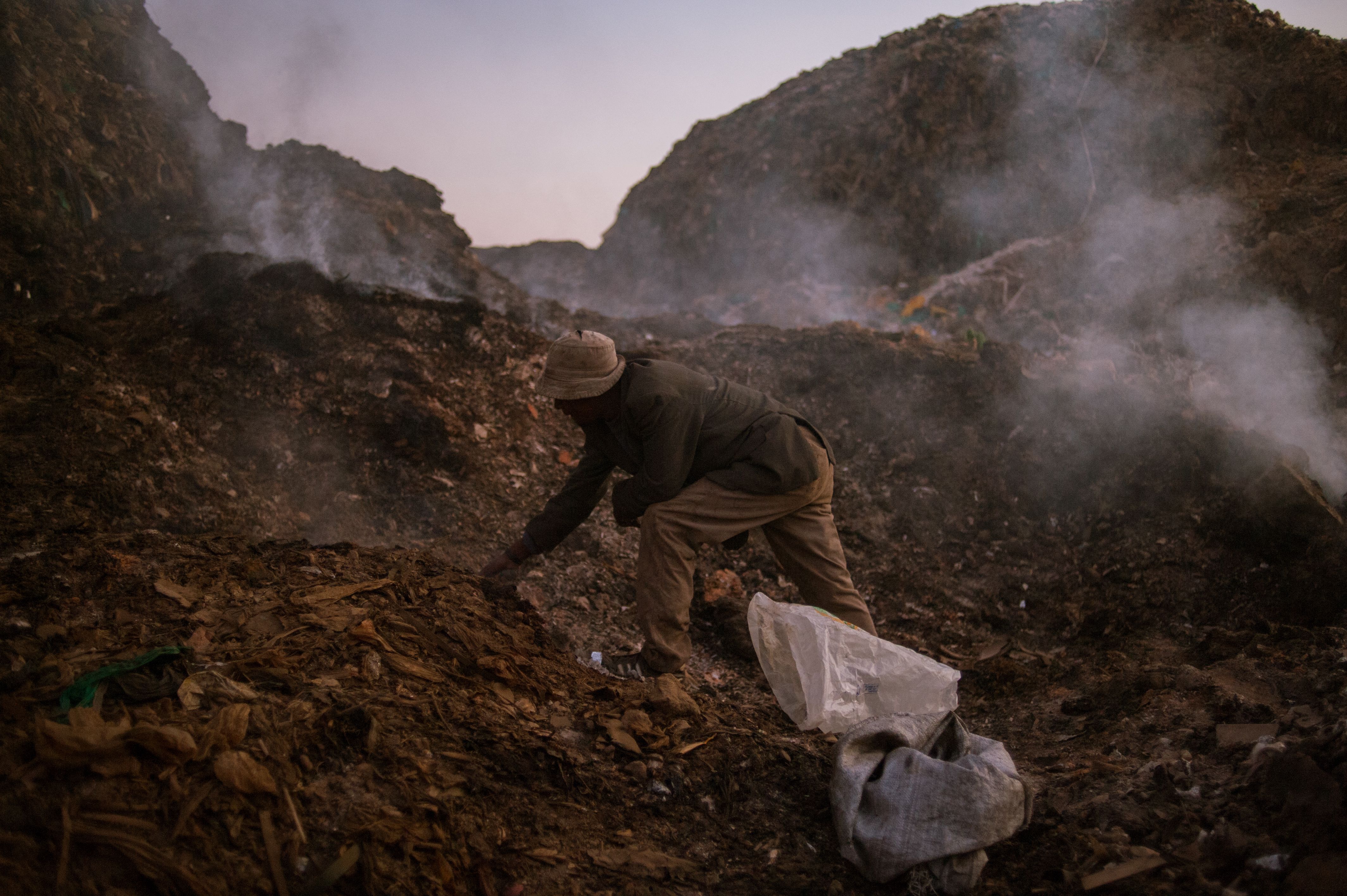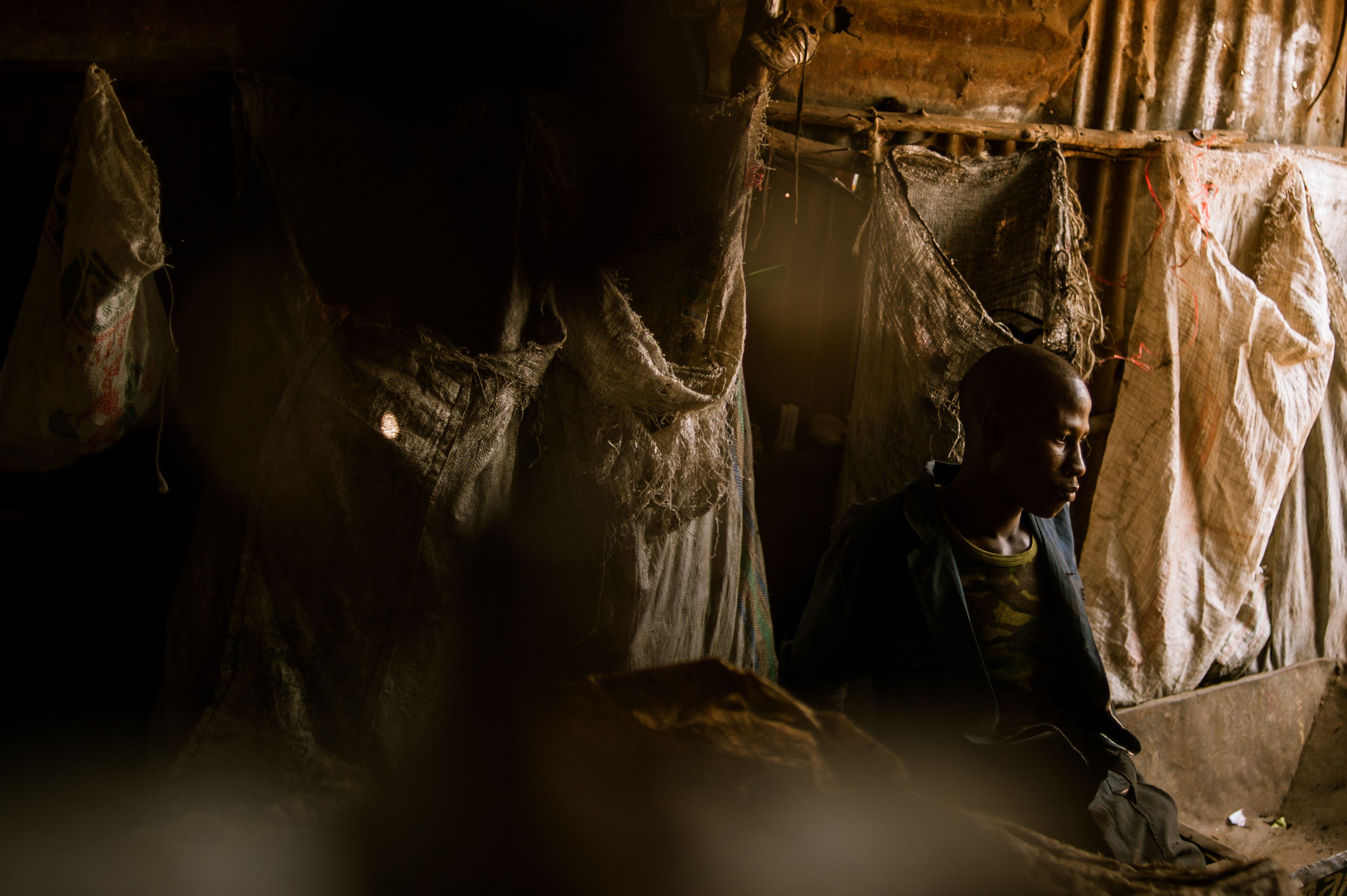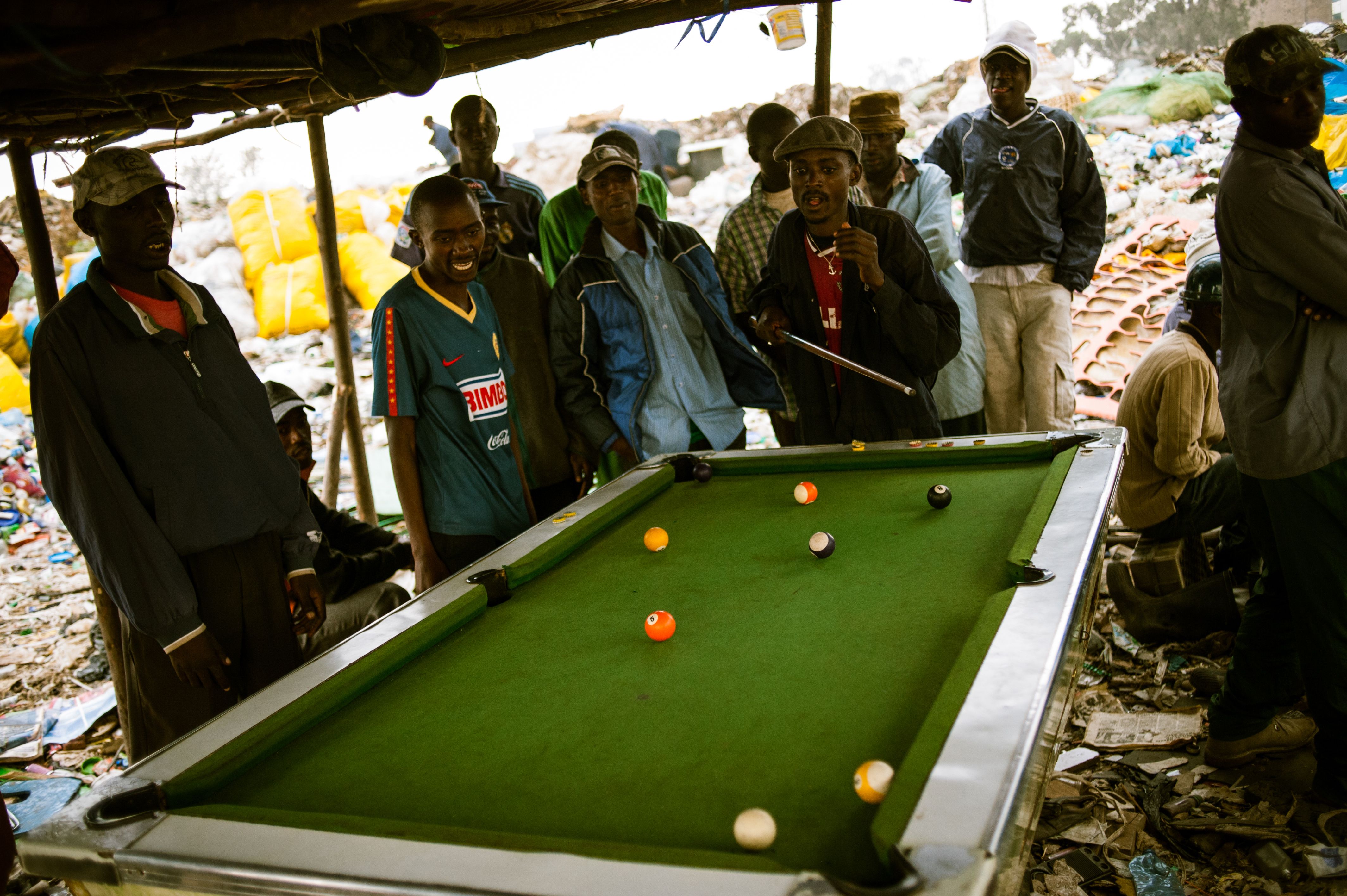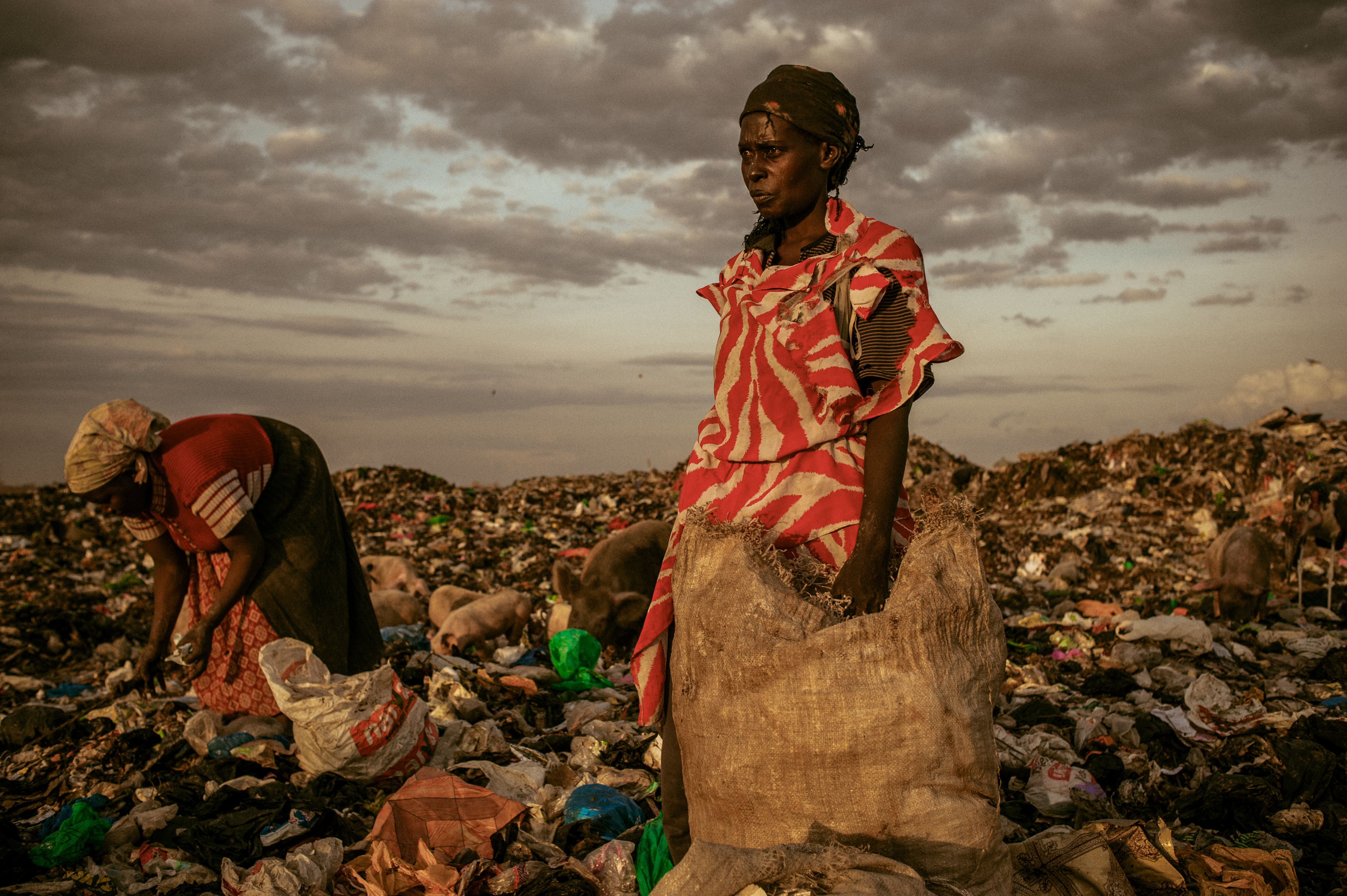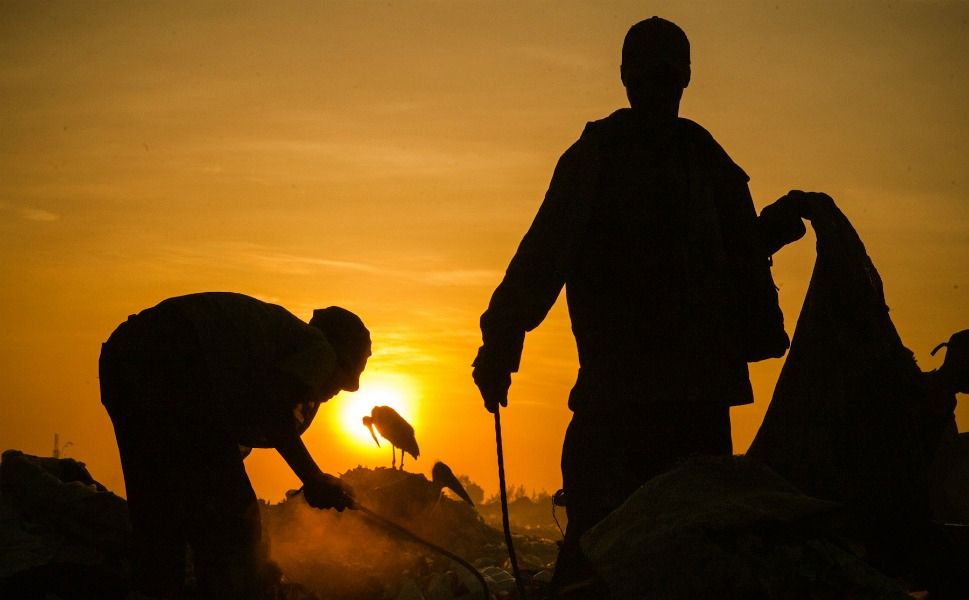East Africa's most populous city, Nairobi, is a booming metropolis, regional headquarters to major international corporations like Coca-Cola and Google, and filled with upwardly mobile urban dwellers. And all the trash they produce has to go somewhere. It ends up in Dandora, the city's only municiple dumpsite, where thousands of workers -- men, women, and children -- pick through refuse daily, looking for food and recyclable scraps to sell. It's a hard, toxic life -- but it's also the only job available, and as the Nairobi city council considers closing the site and moving it across town, they fear losing even this most unwelcome resource. As David Conrad writes for Foreign Policy, "They are fully aware that Dandora is not good for their health, but a slow death is better than no life at all." Here, photographer Micah Albert takes a look at the lives of the people who make their living scouring the massive waste land.
